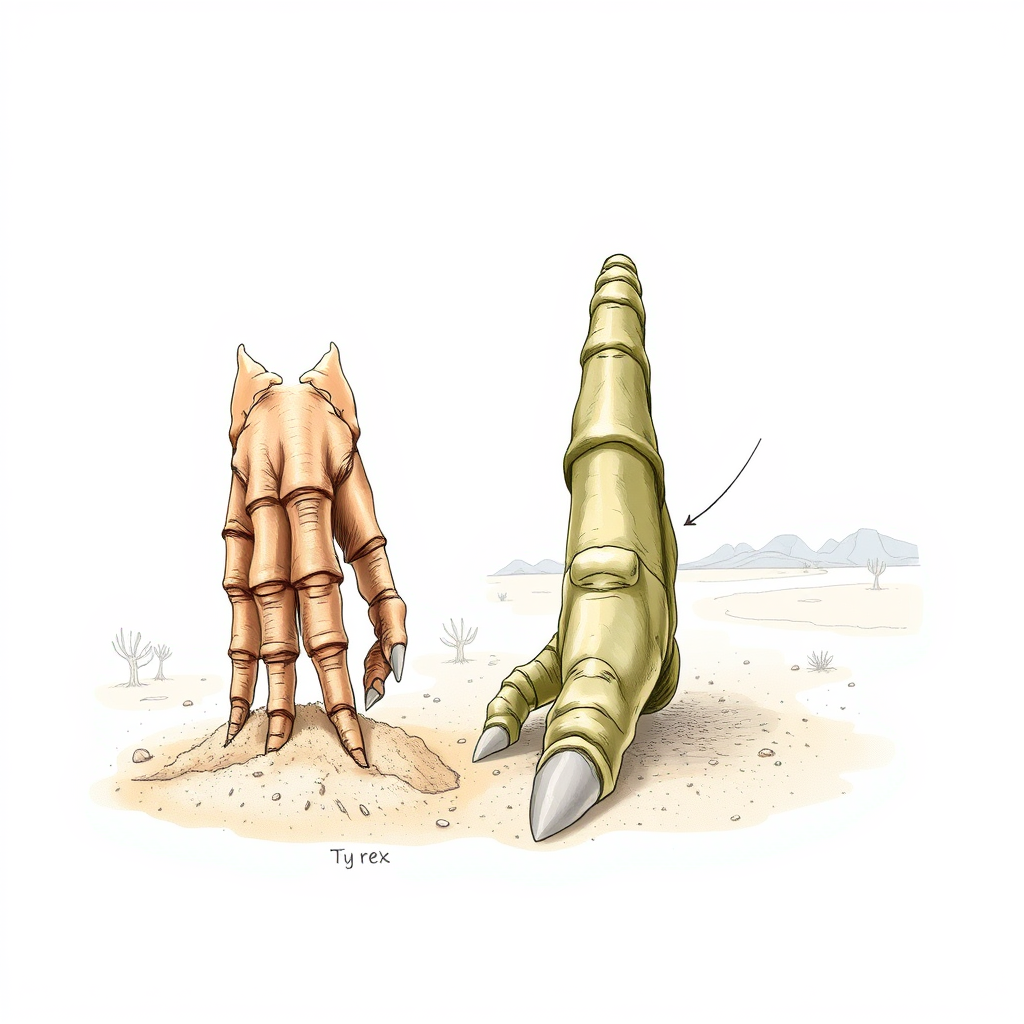Dinosaur Arms: Evolution's Secrets & Surprising Functions

A recent study challenges long-held assumptions about the evolution of forelimbs in theropod dinosaurs, particularly concerning the famously short arms of the Tyrannosaurus rex. Researchers at the University of Edinburgh, led by Milly Mead, have discovered evidence suggesting that reduced limb size and digit loss weren’t simply the result of evolutionary “uselessness,” but rather adaptations to new environments and the development of novel functions.
The research focuses on oviraptorosaurs, a group of bird-like dinosaurs that lived during the Cretaceous period. These dinosaurs, ranging in size from a house cat to a giraffe, were covered in feathers and possessed beaks, sharing many characteristics with modern birds. While most oviraptorosaurs had long arms with three clawed fingers, one species, Oksoko avarsan, stood out with its stumpy arms and only two functional fingers.
Mead’s team analyzed patterns of arm evolution in oviraptorosaurs and found that the reduction in limb length occurred before the loss of the third finger. This contradicts the prevailing theory that shrinking limbs and digit loss were a byproduct of disuse. The findings suggest that the arms didn’t become shorter because they weren’t being used, but rather that the arms shrunk first, potentially driven by a shift in habitat and lifestyle.
The researchers propose that the expansion of a specific group of oviraptorosaurs, the Heyuanninae, into the Gobi Desert around 100-94 million years ago, played a crucial role. This new environment likely presented different survival challenges, requiring adaptations to new food sources or predators. Oksoko, with its reduced limbs, may have been better suited to this environment, potentially using its strong, two-fingered forelimbs for digging – perhaps for food like plant roots or insects, or for nest building. Evidence of strong muscle attachments on Oksoko’s bones supports this theory.
The Oksoko fossil itself has a remarkable story. Originally discovered by poachers in Mongolia, it was rescued by authorities in 2006 and eventually studied in detail, beginning in 2020. It was this unusual two-digit forelimb that initially sparked the research into finger evolution.
While Oksoko and T. rex share similarities in forelimb reduction, the researchers emphasize that their lifestyles were vastly different. Oksoko was a small herbivore, while T. rex was a massive carnivore. The latter’s size would have made digging impractical. However, the study raises a compelling question: if Oksoko’s reduced limbs served a purpose, could T. rex’s famously short arms also have had a function, rather than being vestigial?
This research represents a significant step forward in understanding the diversity of forelimb evolution in theropods. It demonstrates that limb reduction and digit loss aren’t necessarily signs of evolutionary failure, but can be adaptive responses to environmental pressures. It’s a reminder that evolution isn’t always about creating the “perfect” form, but about finding solutions that work within a specific context. The findings challenge us to reconsider long-held assumptions about dinosaur anatomy and behavior, and to appreciate the remarkable plasticity of evolution.